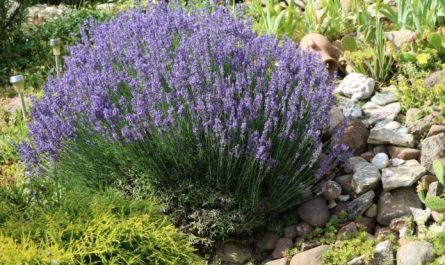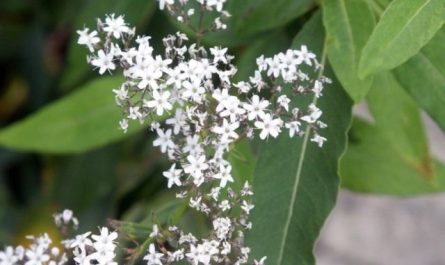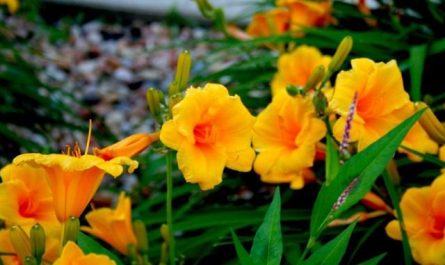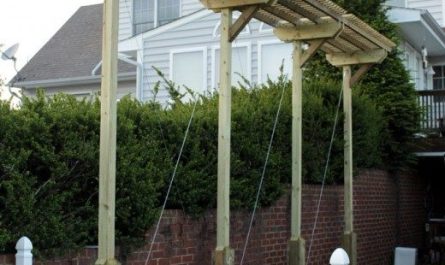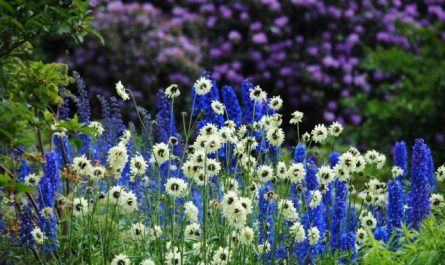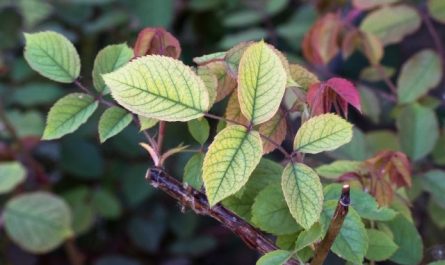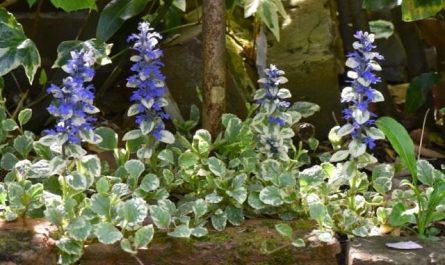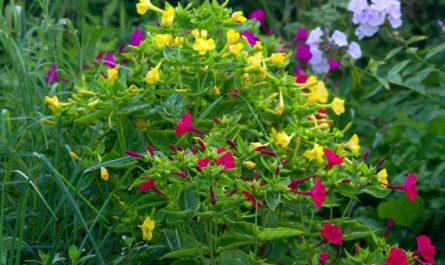The English call this plant Lady’s Mantle, the Germans Frauenmantel, which means “lady’s cape”. The scientific Russian name is cuff, one of the popular names is hare’s coat. Cuff belongs to the rose family, it is a creeping rhizomatous perennial (lives up to 60 years!) with ascending branched stems. When sown with seeds, it blooms in the 5th-6th year. The flowers are small, greenish, collected in graceful inflorescences. Cuff is decorated primarily by the leaves of an original shape, the lower ones are on petioles, and the upper ones are sessile, tightly embracing the peduncles, like real cuffs. Some compact species have more dissected leaf blades.
Miraculous. Early in the morning, when the dew glitters on the grass, the cuff looks especially impressive. In the center of each leaf, curled into a funnel, a large drop of water shimmers with all the colors of the rainbow, and the lacy edges of the leaf are covered with small droplets.

© G7OBC
Alchemists believed that this was a magical moisture, and even tried to use it to obtain the philosopher’s stone and the elixir of life. This is probably why the cuff has the Latin name Alchemilla, the herb of alchemists. One of the Russian names for this plant is dew grass, another is God’s tear. According to legend, gnomes wash themselves with dew collected from the cuff, so they never age. In Switzerland, women still wipe their faces with cuff leaves covered in dew, believing that this will give their skin elasticity and freshness. In the old days, cuff was used in love magic, it was believed that this was the plant of Venus, its root was included in recipes for love potions. Hence another popular name – love potion.
Healing. You won’t find the lady’s mantle except in the desert, it grows in meadows and clearings, forest edges all over Russia, Ukraine, Belarus, the Caucasus, and Central Asia. It is believed that there are more than a hundred species in Europe, but the most widespread is the common lady’s mantle. Other species, by the way, have the same healing properties, so any lady’s mantle can be used for treatment. In folk medicine, lady’s mantle tea is used against menopause ailments and too heavy menstruation. To eliminate skin rashes in young girls, it is recommended to brew a mixture of wild pansy and lady’s mantle in equal parts (2 teaspoons) as tea.

spoons of the mixture pour a glass of boiling water and leave for 10-15 minutes, drink half a glass a day). Alchemilla has anti-inflammatory, hemostatic, diuretic, expectorant, soothing effects (by the way, another popular name for the plant is sick grass). Crushed leaves are applied to cuts and wounds for their rapid healing. To prepare an infusion used for kidney and bladder diseases, heavy periods, uterine and intestinal bleeding, lung diseases, you need to pour 4 tablespoons of alchemilla herb with 2 glasses of boiling water, let it stand under the lid for 4 hours and take half a glass before meals 3-4 times a day. Drinking such an infusion improves peristalsis and intestinal motility in atony and diarrhea, acts as a mild diuretic and hemostatic agent, improves expectoration. The plant restores metabolism, is used for heart pain, atherosclerosis, dropsy, anemia, malaria, dyspepsia, migraine. Externally, the infusion and juice of the above-ground part of the cuff are used for wounds, skin diseases, boils, severe runny nose and nosebleeds, for baths for gout and rheumatism. To prepare such an infusion, take 6 teaspoons of raw materials per 1 glass of water.

© H. Zell
If you want to prepare the leaves of the lady’s mantle, collect them during the day when the dew has dried (the collection period is from spring to July) and dry them in the air in the shade.
Edible. You can make a salad from fresh alchemilla leaves: wash 150 g of leaves, dip in boiling water for 1 minute, cool, chop, add 25 g of chopped green onions and 15 g of grated horseradish, salt and season with sour cream (20 g).
Fresh lady’s mantle leaves can be added to green nettle and sorrel soup (the proportions are as follows: 50 g nettle, 100 g lady’s mantle, 20 g sorrel per 350 ml water or broth). First, pour boiling water over all the greens and keep them in it for 2-3 minutes, then throw them in a colander, let the water drain, chop finely and stew with fat for 10 minutes. Boil the potatoes in water or broth until half-ready, add onions sautéed with carrots and greens. Before serving, season with sour cream and slices of hard-boiled egg.
Leaves and young shoots can be dried and used as a seasoning for first and second courses.

© Anneli Salo
Beautiful. The English have long used this plant in garden design. It can play different roles: set the tone in a natural style garden, serve as a background plant, fill those empty areas of flower beds in the summer, where bulbous plants bloomed in the spring. Large species are great for creating herbaceous borders, for the lower tier of flower beds. Alchemilla can also act as an accent plant, distinguished by the special graphics of the leaf blade, coloring in yellow-green tones. It will also cope well with the role of a ground cover plant. Low species can decorate a rock garden.
It is easy to propagate cuffs; seeds are sown in winter in boxes that are left in the garden. In spring and summer, you can divide the overgrown bushes. Cuffs can be weedy, but they are still much less aggressive than many decorative-leaved “garden weeds”.
Alchemilla is unpretentious, undemanding to care and soil, grows in one place for a long time without compromising its decorativeness, and easily tolerates transplantation. Beautiful leaves and delicate inflorescences are good in a bouquet, and are widely used by florists. Plant this pretty plant in your garden, and in the morning you will admire the dew drops shimmering on its leaves.

